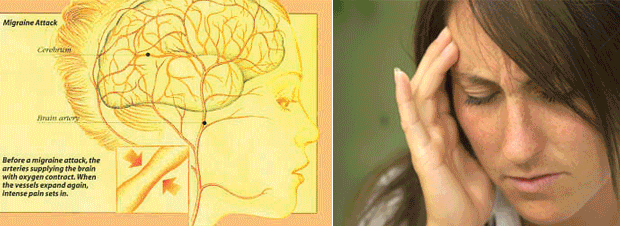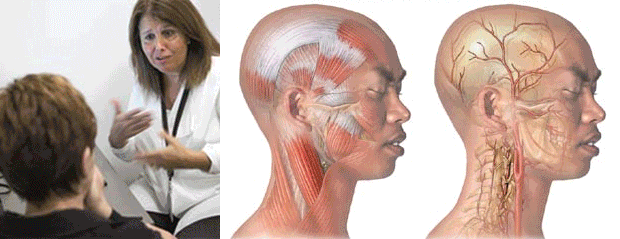|
When you hear the word migraine do you think of a
disease or a headache? Most people would answer that by saying a
headache. Well, they are partially right. Migraine is actually a
neurological disease and the bad headache that people associate with
migraine is only one of the symptoms of this disease. The other symptoms
may include: sensitivity to light, sound, or smell; tingling or
numbness; light flashes; nausea or vomiting; difficulty with speech.
This is a disease that involves the heightening of one's senses.
It was long believed that migraines were brought about by caffeine,
stress or tension. This is simply not true. The migraine disease is
physiological/biological and not psychological. In fact, if was first
learned in the mid 90's that migraine was a genetically based disease
and if you have even one parent who has this disease, you have a 50%
chance of suffering the same fate. This genetic revelation was further
examined by the Australian genetic research team at Griffiths University
in Queensland, Australia, where they recently discovered 3 genes for the
migraine disease!
Migraine disease affects approximately 32 million Americans, the
majority of which are women. The average age of the onset of this
disease is between the late teens and the 40's. However, there are
approximately 8 million children that suffer from migraine.
|
|
 |
|
Though there is no cure for migraine there are ways to help manage the
symptoms. First you need to understand the difference between headaches
and the migraine head pain. The pain from a headache is caused when the
blood vessels in the cranium narrow. The pain of the migraine is caused
when the blood vessels in the cranium expand. If you take medication
that is meant to treat headaches, you may actually make the migraine
pain worse because these meds work by dilating the blood vessels!
Management of migraine symptoms:
* There are many different triggers and they can be categorized into two
groups-the controlled triggers and the uncontrolled triggers. Red wine,
cigarette smoke, chemical smells, and some hard liquor are examples of
controlled triggers. Menstrual cycle and weather patterns are examples
of uncontrolled triggers. While you may not be able to do much about
avoiding the uncontrolled triggers, knowing what they are will help you
with managing the symptoms of this disease and avoiding the controlled
triggers are a must.
* Abortive medication prescribed that is taken at the first sign of
migraine to fend off the attack or lessen the symptoms. This must be
taken as soon as you believe a migraine attack is eminent. If taken
after the onset of the attack, you may find the treatment to be
completely ineffective.
* Preventive medication prescribed is taken to prevent the migraine or
reduce the number of attacks. There are some promising new medications
on the market but be sure to weigh the risks of the side effects against
the attacks. There are also some promising natural products containing
feverfew that are worth checking into.
|
 |
|
This disease is one of the most misunderstood and misdiagnosed of
diseases. Estimates state that between 60-70% of people with this
disease will never be diagnosed! Migraine is a serious disease and needs
to be treated as such. The migraine disease can bring about aneurysms,
strokes, permanent vision loss, and even death when not treated
properly. If you have a blood relative with migraine and suspect you may
be suffering from this debilitating disease, see your doctor and insist
that what you are experiencing is “not just in your head” or brought on
by stress! Remember, the medical professionals work for you.
There is some good news, though. With the knowledge of migraine being a
genetically based disease and the discovery of the 3 identifying genes,
it won't be long before DNA is used to help diagnose and ultimately
treat this painful, disabling disease.
|